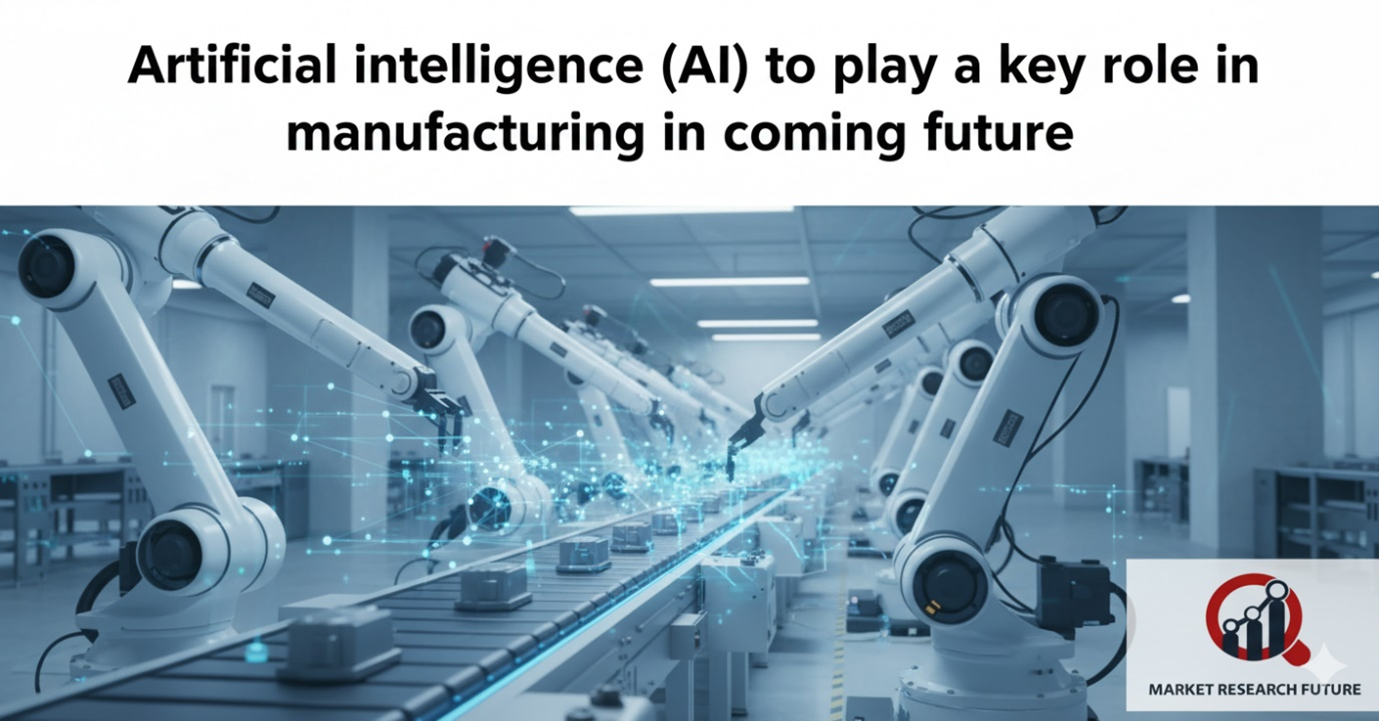Artificial intelligence (AI) to play a key role in manufacturing in coming future

Artificial intelligence is slowly becoming the main part of modern manufacturing. Industrial IoT and smart factories are becoming more popular, which means that a lot of data is created every day. Machine learning (ML) and advanced neural networks are powering AI, which is helping manufacturers turn this data into useful information. AI is changing the future of the factory floor by making production more efficient, processes easier to follow, and decisions easier to make.
Predictive maintenance is one of the most well-known uses of AI in manufacturing. AI can look at production data and predict when machines might break down before they do, which keeps downtime from costing a lot of money. In addition to that, AI-powered solutions cut down on waste, make it easier to predict demand, and make sure that people and robots can work together without any problems. The idea of "smart factories" that really work together with machines is becoming more possible as human–machine partnerships get stronger.
The idea of Industry 4.0, which is the next step in digital transformation in manufacturing, is based on AI. Automation, smart machines, and constant data flows from connected devices all need technologies that can understand data in real time. Artificial intelligence is the key to getting useful information from these huge data sets. There are endless possibilities, from making workers safer and supply chains better to lowering operational costs.
Why AI is Important for the Future of Making Things
Every manufacturer wants to make things more efficient, lower risks, and make sure they last for a long time. AI and ML are what make these goals possible. AI technologies can find problems, guess what customers want, and make every step of production better by making sense of complicated data. Manufacturers can see everything that happens in all of their locations and regions, which lets them respond to problems faster than ever before.
AI doesn't just give you information; it learns and changes all the time. Machine learning algorithms get better with each interaction, which makes processes smarter over time. This flexibility is now necessary for survival in a time when things are quickly becoming digital.
What is making people want to use AI?
Market forces and changing customer expectations are both pushing businesses to adopt AI. Some of the main things that drive it are:
Revenue streams that are very hard to predict
Increasing need for lower costs and more efficiency
Faster turnaround times and stricter delivery schedules
More oversight and regulatory demands are coming in.
More flexible work hours and learning requirements
Managing capacity and meeting the needs of a complex supply chain
Growing interest in personalized and small-batch goods
It's clear that traditional methods can't keep up with these pressures. Manufacturers need smart systems that can quickly adjust to changing conditions.
The Future of AI in Manufacturing
Factories of the future will be more flexible, responsive, and focused on people than ever before. AI technologies will make it possible to:
Preventive maintenance to keep equipment running longer and reduce downtime
Being able to change quickly when demand changes in global supply chains
Validation with precision for complicated items like microchips and high-tech electronics
Customizing at a low cost, even for small batches or single units
Reduced repetitive tasks and let workers focus on new ideas, which made them happier.
AI will be both a shield against waste and a spark for new ideas in this new era.
The Fuel That Powers AI in Manufacturing
Better access to historical and real-time datasets is speeding up the use of AI in manufacturing. Manufacturers now have the raw data they need to make powerful AI models, from unstructured factory data to insights into how customers act. The rise of next-generation computing architectures makes it possible to train these models faster and better.
New opportunities are opening up thanks to improvements in deep learning and artificial neural networks (ANNs). These models can find small patterns, keep learning, and give businesses solutions that are tailored to their needs.
For example, computer vision has already made a name for itself by finding flaws in products that people can't see. New technologies like generative adversarial networks (GANs) are taking this even further by making images clearer, inspections more accurate, and predictive modeling better.
Working together and coming up with new ideas are the keys to success.
Partnerships between tech companies, manufacturers, and innovators are speeding up the process of making new things. Companies are using their knowledge of the manufacturing industry and the latest AI tools to create specialized solutions that meet the specific needs of the industry.
The partnership between tech and industry is opening up possibilities that were once thought to be impossible, like robots that learn from human workers and software platforms that make whole supply chains run more smoothly. These partnerships are making it possible for factories to be run by AI that is flexible, smart, and ready for the future.
A Look at Tomorrow
The road to AI-powered manufacturing is still very new. As industries move further into the Fourth Industrial Revolution, manufacturers are seeing smart systems as more than just tools; they are seeing them as important partners in growth. People no longer see AI as something they can choose to use; it is becoming the main driver of change.

Leave a Comment